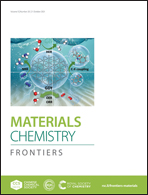Temperature-regulated biomass-derived hard carbon as a superior anode for sodium-ion batteries†
Abstract
Hard carbon is considered as one of the most promising carbonaceous anode materials to promote the commercialization of sodium-ion batteries (SIBs). However, the low initial coulombic efficiency (ICE) of hard carbon materials and the mechanism of sodium storage are still controversial, which seriously restricts their practical applications in SIBs. Herein, hard carbon materials with a multichannel structure derived from golden berry leaves were successfully prepared via a simple carbonization method that was carried out in the temperature range of 1000 °C to 2000 °C. The initial discharge capacity of the sample carbonized at 1400 °C can reach 338.7 mA h g−1 at 20 mA g−1, and deliver an excellent ICE of 86.43%. Furthermore, when the carbonization temperature reaches 2000 °C, the contribution of the plateau-specific capacity can reach up to 91.11%. Combining both experimental characterization results and analysis, the mechanism of sodium storage in hard carbon can be considered as the slope capacity corresponding to the adsorption of sodium ions on defect sites and heteroatoms, while the plateau capacity corresponds to the sodium ion intercalation into the interlayers and filling in the micropores.

- This article is part of the themed collection: Energy storage with rechargeable Li batteries and beyond


 Please wait while we load your content...
Please wait while we load your content...